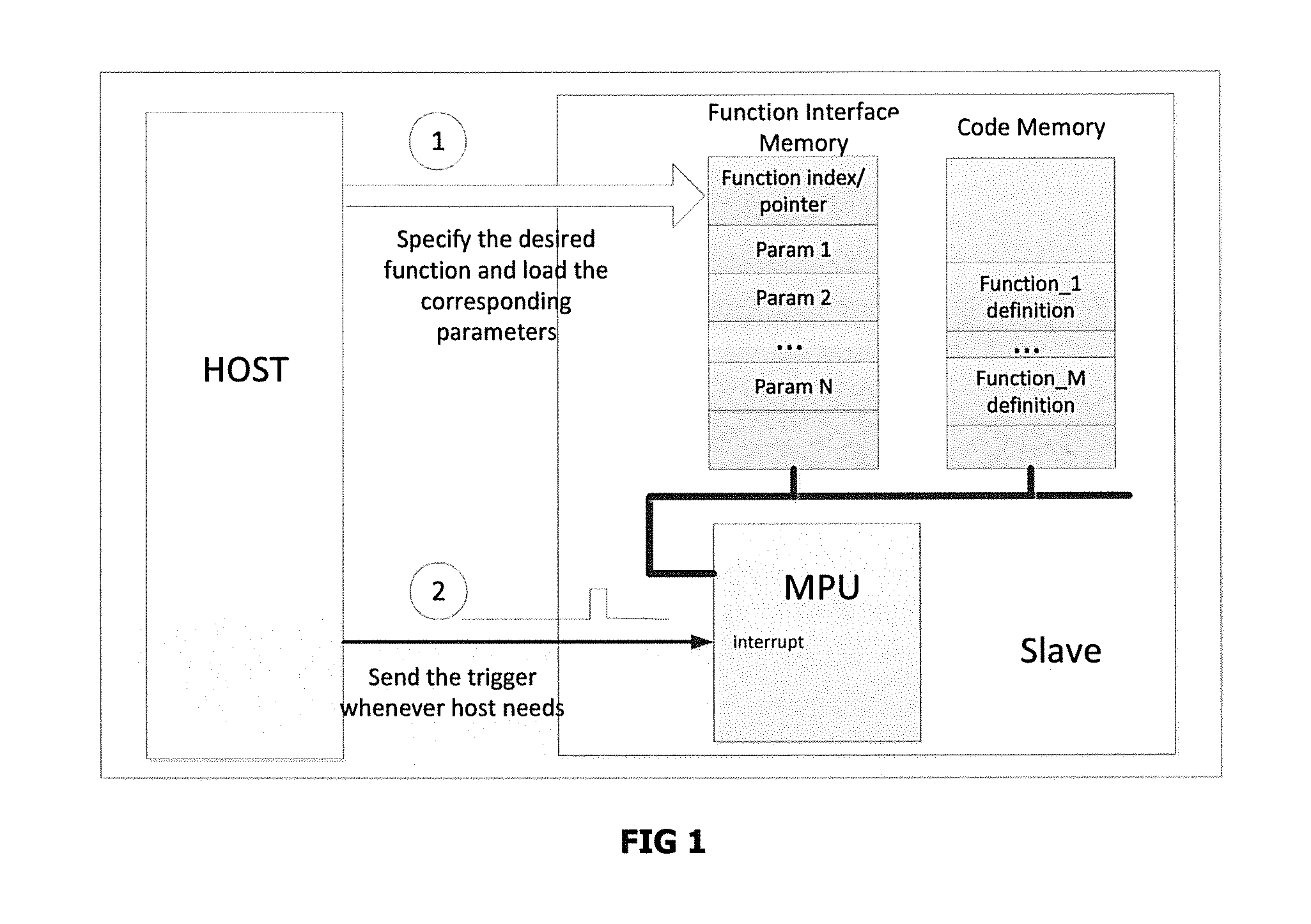Master-slave system with triggered remote function calls
a remote function and master-slave technology, applied in the field of master-slave systems, can solve the problems of requiring a new practical real-time configuration/control, too slow com link to support real-time function, and difficult to re-configure/update slave-side hardware function blocks,
- Summary
- Abstract
- Description
- Claims
- Application Information
AI Technical Summary
Benefits of technology
Problems solved by technology
Method used
Image
Examples
Embodiment Construction
[0012]This Description and the Drawings constitute a Disclosure of a triggered remote function call methodology, such for a master / slave system including controlling slave side hardware functionality / configuration.
[0013]As used in this Disclosure, master / host and slave are generic for networked devices configured to implement a triggered remote function call methodology according to this Disclosure.
[0014]In brief overview, the Disclosed triggered remote function calls can be used in master-slave systems to trigger slave-side software functions pre-loaded by a master into slave MCU memory, with associated parameters pre-loaded into a slave function interface memory. A master issues trigger-function signals (such as rising / falling edges or signal levels) over a trigger-function signal line. The slave includes a trigger conditioning block that in response issues a trigger-function request to the slave MCU, which calls / executes the associated software function, including accessing the a...
PUM
 Login to View More
Login to View More Abstract
Description
Claims
Application Information
 Login to View More
Login to View More - R&D
- Intellectual Property
- Life Sciences
- Materials
- Tech Scout
- Unparalleled Data Quality
- Higher Quality Content
- 60% Fewer Hallucinations
Browse by: Latest US Patents, China's latest patents, Technical Efficacy Thesaurus, Application Domain, Technology Topic, Popular Technical Reports.
© 2025 PatSnap. All rights reserved.Legal|Privacy policy|Modern Slavery Act Transparency Statement|Sitemap|About US| Contact US: help@patsnap.com


